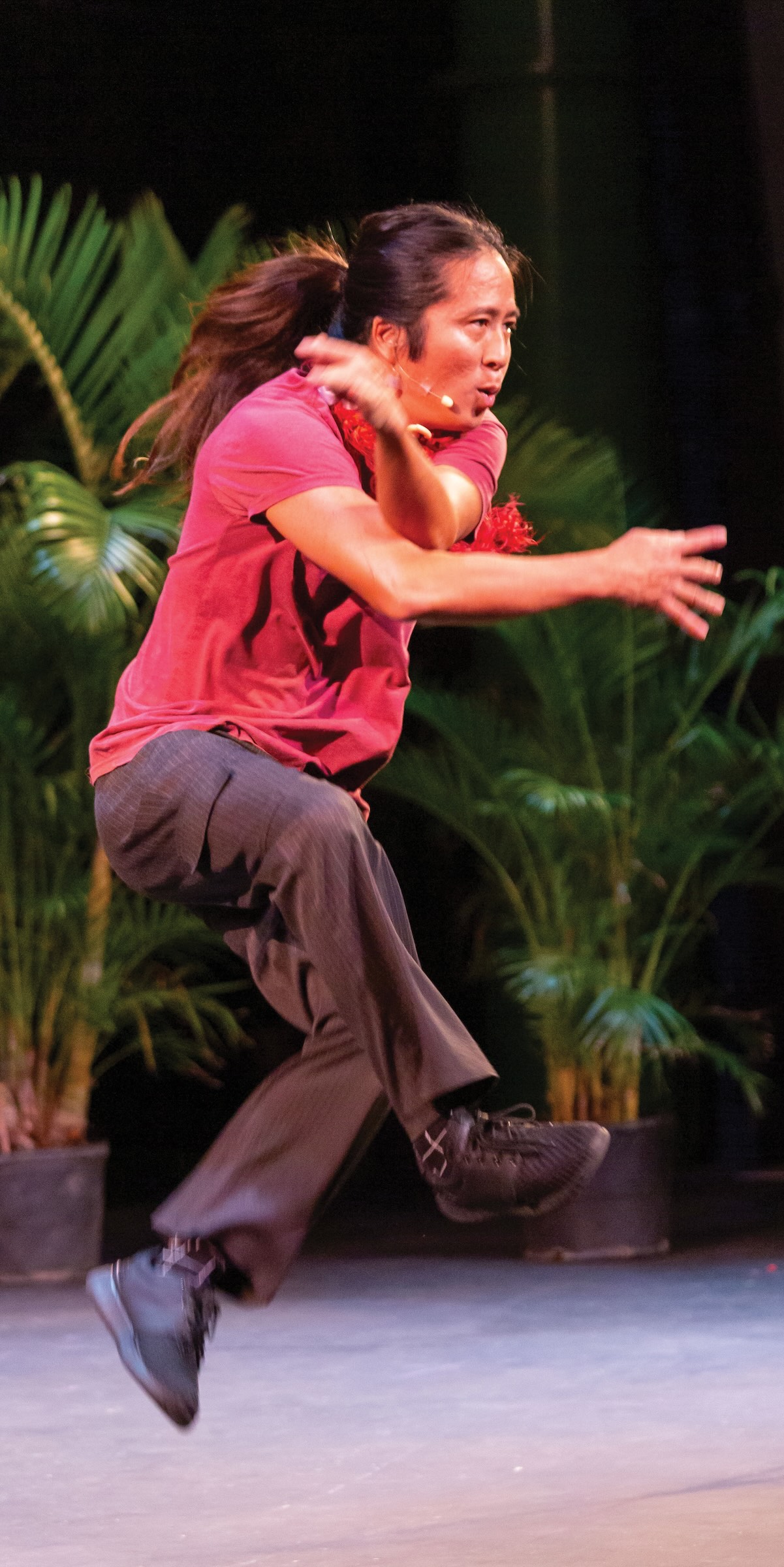
Steven “Kealoha” Wong ’95, Hawai‘i’s first Poet Laureate Emeritus, returned to his alma mater this November as part of Punahou’s 2024 – 25 Writer-in-Residence program. Over three weeks, he brought his unique blend of art and science, playfulness and depth, to show students how words can unlock new ways of thinking and expressing themselves.
Known for pairing poetry with performance – including dance, storytelling and humor – Kealoha has captivated audiences on topics ranging from the origins of the universe to lighthearted moments playing with a ball. A graduate of MIT with a degree in nuclear engineering, his path took an unexpected turn when he discovered slam poetry in San Francisco. The exciting art form ignited a spark, prompting him to pursue a career as a poet and performer.
He founded Hawai‘i Slam and the popular “First Thursdays,” the nation’s largest registered slam poetry series, which helped cultivate a thriving spoken-word community. His talent and passion earned him recognition as Hawai‘i’s first Poet Laureate in 2012, and he has performed everywhere from the White House to stages worldwide.
During his residency at Punahou, students from kindergarten through the Academy were drawn to his multifaceted approach and his ability to connect art and science, as well as serious and playful topics. For younger students, he used play-based activities to spark creativity, while older students explored themes of identity and self-reflection. One prompt, “I am more than what they think I am,” became the first sentence for turning those reflections into poetry.
Kealoha guided students not only in crafting their poetry but also in bringing their words to life through performance. He taught them to experiment with tone, volume and energy to create dynamics that captivate an audience. “Poetry is creative expression through words,” he explained. “It’s how we interpret and express the things we see, taste, smell, hear and feel. A poet’s job is to pare those experiences down into words and emotions that move people in a way that allows us to connect as humans.”
With infectious enthusiasm, he encouraged students to experiment with their writing and find their unique voice. He emphasized that “creativity and inspiration have to come from an internal place” and reminded them that “words have to serve the message.” To help students overcome stage fright, Kealoha shared practical tips, such as grounding themselves by touching the floor or finding a friendly face in the crowd, encouraging them to “own the moment” on stage.

Kealoha’s residency extended beyond the classroom with two public events that drew crowds to Dillingham Hall. The first, “The Story of Everything,” showcased his feature film, which weaves poetry, science, dance and visual effects to explore the origins of life and humanity’s future. It asks two timeless questions: Where do we come from? and Where do we go next?
The second event, Verse and Vibes: Kealoha & Friends Live at Punahou, featured Kealoha performing alongside 12 student poets he encountered in the classroom. The evening gave the young creators the chance to share their work on a professional stage. “Performing poetry is a form of public speaking, so it was great to have the opportunity to practice that skill while also honing my creativity,” said Isato Kimura ’25, one of the student performers.
For Kealoha, this residency was a deeply personal one. As a Punahou alumnus, he credits the School with planting the seed of his poetry career. He recalls being inspired as a sophomore when author Lois-Ann Yamanaka visited campus to read from her novel “Saturday Night at the Pāhala Theatre.” Hearing Pidgin in literature for the first time was transformative. “I felt like she was speaking my language. My spine got tingly,” he said. “I was exposed to the power of words that day.”
Now, as the parent of Liko Wong-Miljavac ’31, he continues to be an active part of the Punahou community, and his hope for this residency was also to plant a seed for today’s students.
Kealoha also reflected on the exciting creative opportunities available to students today. “Kids now have access to so many different ways to communicate and create,” he said. “It’s exciting to see how they’re using those tools to express themselves in ways we couldn’t have imagined.”
Punahou’s Writer-in-Residence program, now in its third year, continues to inspire the next generation of thinkers and creators. Funded by the Wing Tek Lum ’64 Endowed Fund for the Hawai‘i Writer-in-Residence Program, the initiative invites accomplished writers with strong ties to Hawai‘i to engage with students, faculty and the community. Previous participants include journalist and playwright Lee Cataluna and New York Times food writer Ligaya Mishan ’88.
By the end of his three weeks at Punahou, Kealoha had left a lasting mark on students, faculty and the community. His residency was a reminder that words are powerful tools to connect, transform and inspire. For Kealoha, poetry is not only an art form, but also a bridge between ideas and people. “What I’m doing now is super fulfilling,” he said. “I’m able to move people emotionally towards ideas of peace, science and knowing.”
